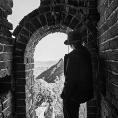Heliopan UV/IR filters -- any info?
-
Recently Browsing 0 members
- No registered users viewing this page.
-
Similar Content
-
- 0 replies
- 191 views
-
- 4 replies
- 475 views
-
- 13 replies
- 594 views
-
- 8 replies
- 653 views
-
- 10 replies
- 666 views
-




Recommended Posts
Join the conversation
You can post now and register later. If you have an account, sign in now to post with your account.
Note: Your post will require moderator approval before it will be visible.